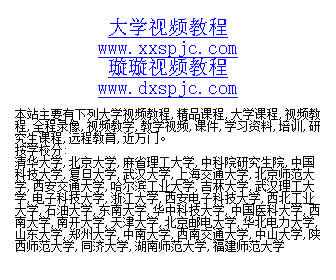
这是Fxphd出的一部讲解影视图像色彩理论和原理的教程。工作于温哥华电影学院的作者Lorne Miess 通过FinalCut软件详细的向我们介绍了电影电视中图像的色彩理论,原理及如何处理影视作品中的各种色彩关系。
对这方面有兴趣的朋友不妨下来看看。
简介:
Taught by Vancouver-based colorist Lorne Miess, Digital Colour Theory introduces you to the fundamentals of light and colour when applied to film and television industries. Understanding how to make your images look as photorealistic as possible is the premise for this course. Standard theories of additive and subtractive colour models will be discussed with examples from various media and software packages such as Final Cut Pro and Photoshop.
Learn what colour enhancement is all about and why you would use it. You'll learn that using different colour correction packages are made easier when you understand the colour theory behind what you want to achieve. This class will cover film and video theory, in particular how colour is used creatively as well as technically. This is a great companion course at fxphd to use with courses on the inner workings of Davinci and Lustre. Have some fun with light and colour, you'll be amazed when you see what you can achieve.
课程提要:
Class 1: Light and color theory, Part 1: where light comes from, how we see it, and Part 2: color theory, bit depth, calibrating broadcast monitors
Class 2: Introduction to colour correction, goals, workflow, Photoshop demo, and understanding video levels
Class 3: Apple's Final Cut Pro 3-way colour corrector, analyzing the video signals, matching shots
Class 4: Colour interpretations, matching shots, numerical interface, secondary colour correction, workflow, setting black, white and gray points numerically
Class 5: Multiple secondary colour correction, current and future technology, video standards, signal flow and patching, legalizing the video signal, day-for-night
Class 6: History of recording, colour correction workflow, film basics by the numbers, spot colour correction
7: Digital Intermediate workflow 4:4:4, edl's, Flexlists, and Keycode, XML workflow, bleach bypass
Class 8: Luminance keying, green and bluescreen keying, reversal film look
Class 9: Colour correction for show openings, for digital compositing, multilayer correction, day-for-night shot revisited
Class 10: Part 1: Logarithmic vs Linear colour space, film basics, film printer points, dirt fixes, and Part 2: Ergonomics, focus and defocus, noise reduction

